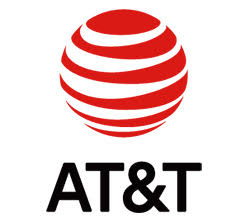Over 200,000 Malware Attacks and 400 Million Spam Messages Blocked Everyday by AT&T
 We know firsthand that malware attacks come in abundant numbers each day. However, in the full scheme of how many malware attacks and spam messages come across the waves of large service providers, the numbers are staggering.
We know firsthand that malware attacks come in abundant numbers each day. However, in the full scheme of how many malware attacks and spam messages come across the waves of large service providers, the numbers are staggering.
According to AT&T, one of the world's largest Internet Service Providers, the network is constantly under malware attacks, over 200,000 of them each day. Moreover, AT&T has divulged that they see over 30 billion malicious scans and over 400 million spam message go across their network each day. While such numbers are astounding, the telecommunications giant has only managed to block about 5 billion of the malicious scans during 2015.
Most of the attacks that AT&T sees come from scripts, which do not involve human oversight or much automation. Apart from the "normal" reach of malware attacks, AT&T detected over 245,000 DDoS attacks that target its network. Many of them over the course of the past year have led to other incidents or data breaches that we have reported on in the past.
With all of the overwhelming attack numbers, there is still light at the end of the tunnel when it comes to the end results of most malicious attacks that AT&T sees. In fact, large companies only reported a total of 23 hours of downtime during the whole year of 2015 and medium-sized enterprises saw just 14 hours of downtime as a result of malicious attacks. While the downtime may have cost many companies millions of dollars lost in revenue, the bigger picture reveals that response plans put in place for such attacks are working for those that have one in place. 34% of the surveyed companies have admitted to having an incident response plan (IRP) in place, which leaves 66% of the companies vulnerable to succumbing entirely to a severe malware attack adding to the loss of revenue due to downtime.
What is clear about AT&T's findings of malware attacks through its network, is that many factors that play into the whole scheme of attacked entities' recovery processes or protective measures put in place. The constant factor here would be that the hundreds of thousands of malware attacks and millions of spam messages sent through AT&T's network will have different effects on victims, mostly dependent on how they handle attacks.
The setup and implementation of IRPs are essential for companies because it's not a question of if a network will be attacked, it is a question of when. Incident response plans have a defined course of action that keeps companies or networks on a path to address attacks, whether they are DDoS attacks, a flood of spam messages, or they get hit with aggressive encrypting ransomware.
Ultimately, companies must become educated and properly educate their IT staff to respond to the surmounting malware attacks that AT&T has revealed takes place in abundant numbers on a daily basis. As a step towards educating and assisting companies on how to deal with the thousands to millions of malicious attacks, AT&T has released a ‘Guide for Cyberbreach Response' that divulges many steps and actions companies can and should take to thwart attacks or the best way to deal with the aftermath. With so many attacks happening on a daily basis, there is no one solution for all. Instead, each company must plan the proper course of action that fits their structure and lessens any backlash that may lead to downtime from a malware attack, which naturally causes loss of revenue.
Leave a Reply
Please note that we are not able to assist with billing and support issues regarding SpyHunter or other products. If you're having issues with SpyHunter, please get in touch with SpyHunter customer support through your SpyHunter . If you have SpyHunter billing questions, we recommend you check the Billing FAQ. For general suggestions or feedback, contact us.